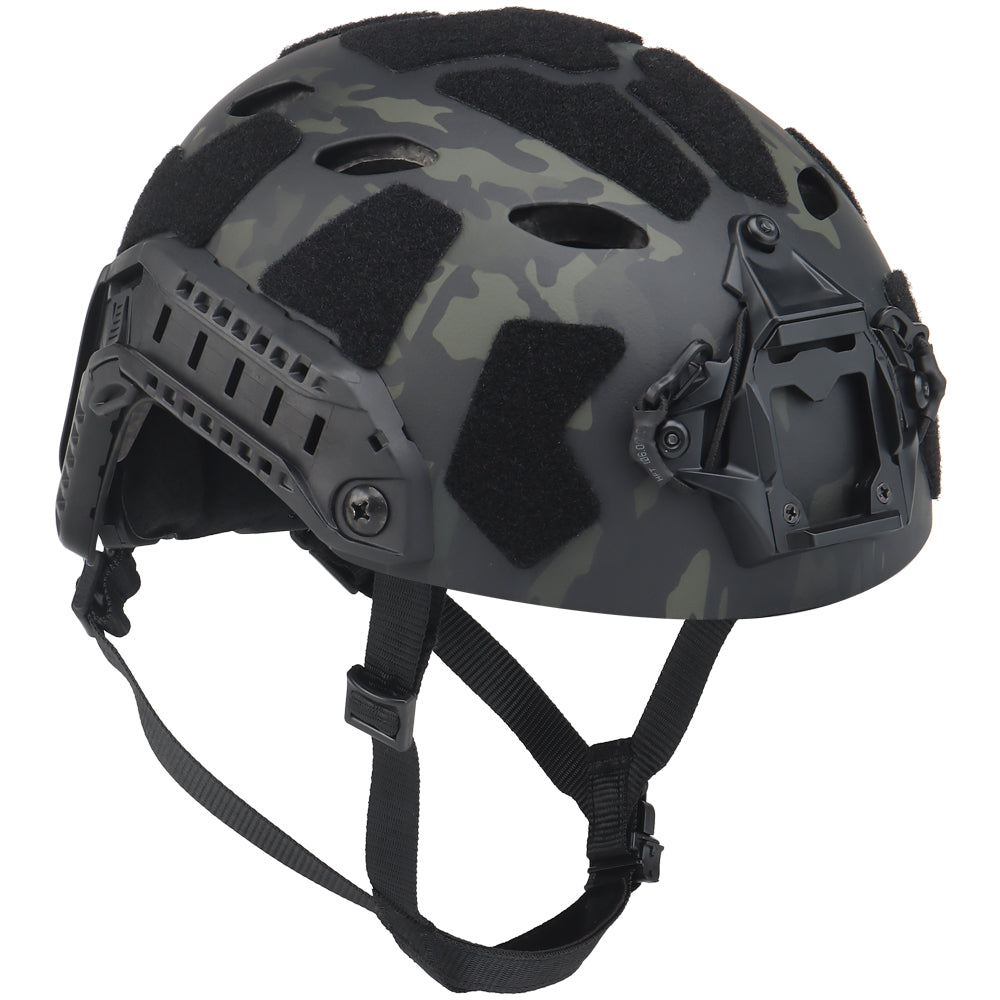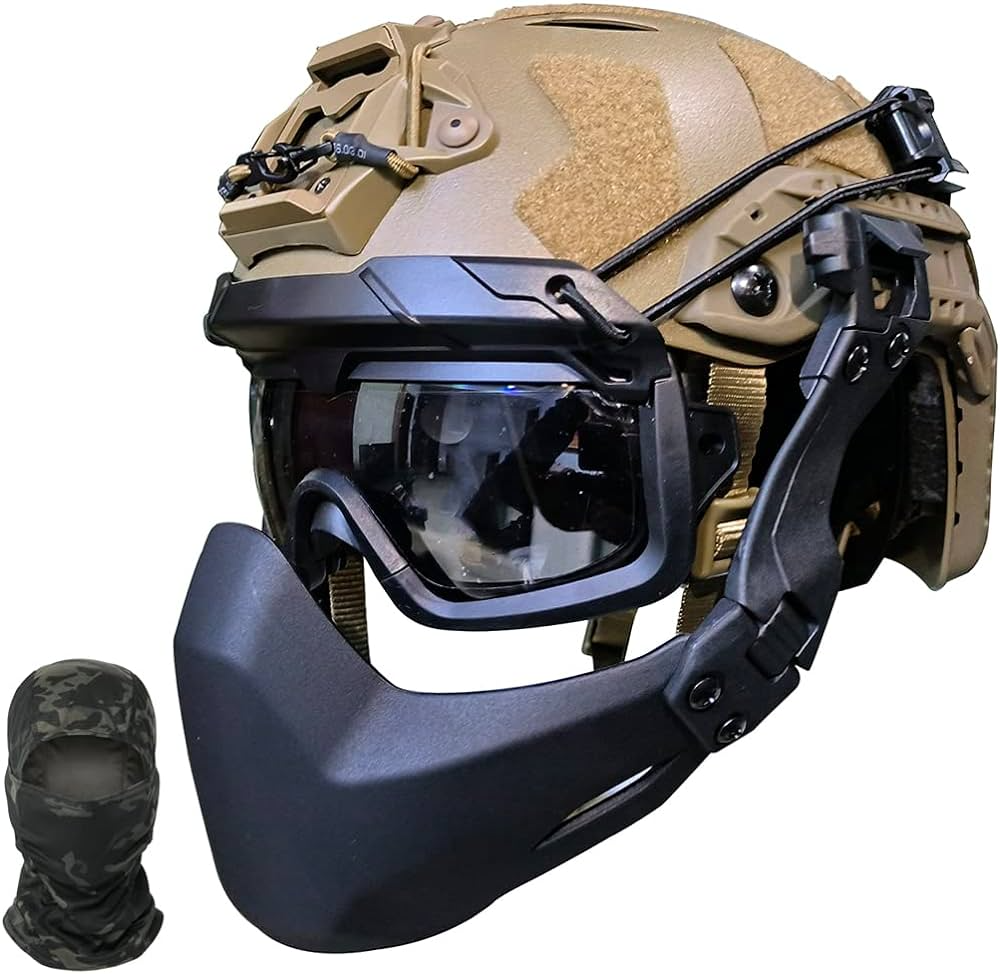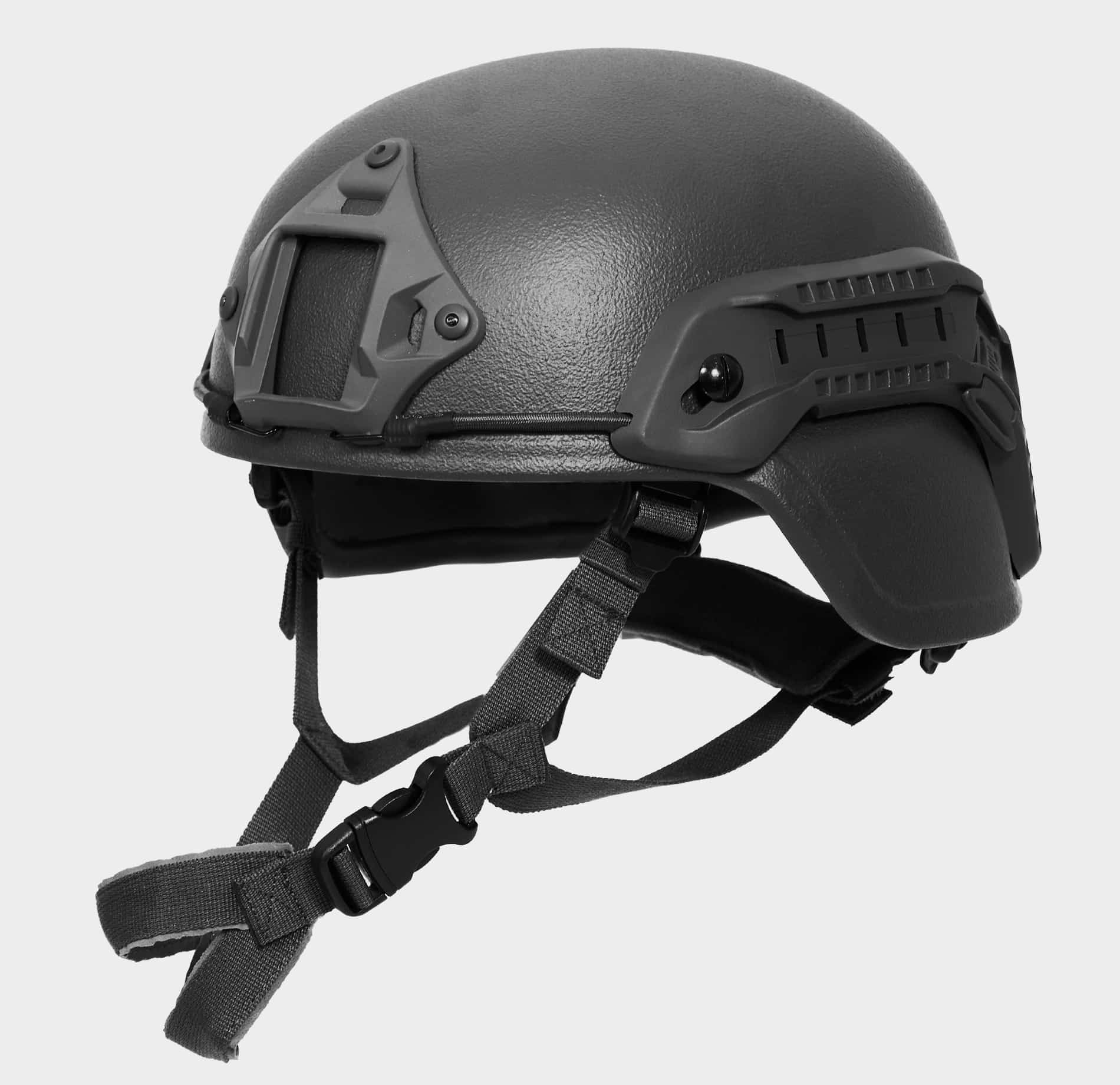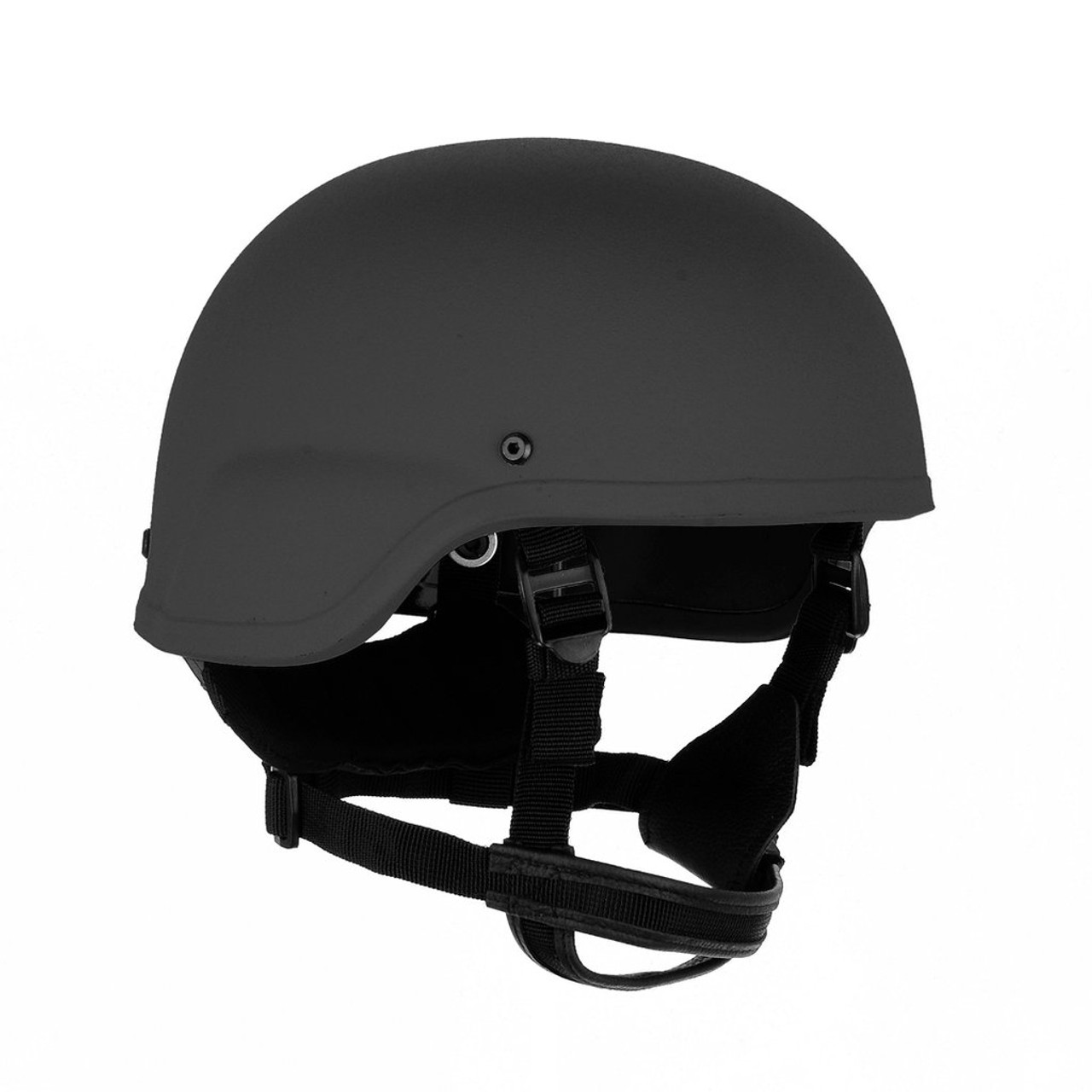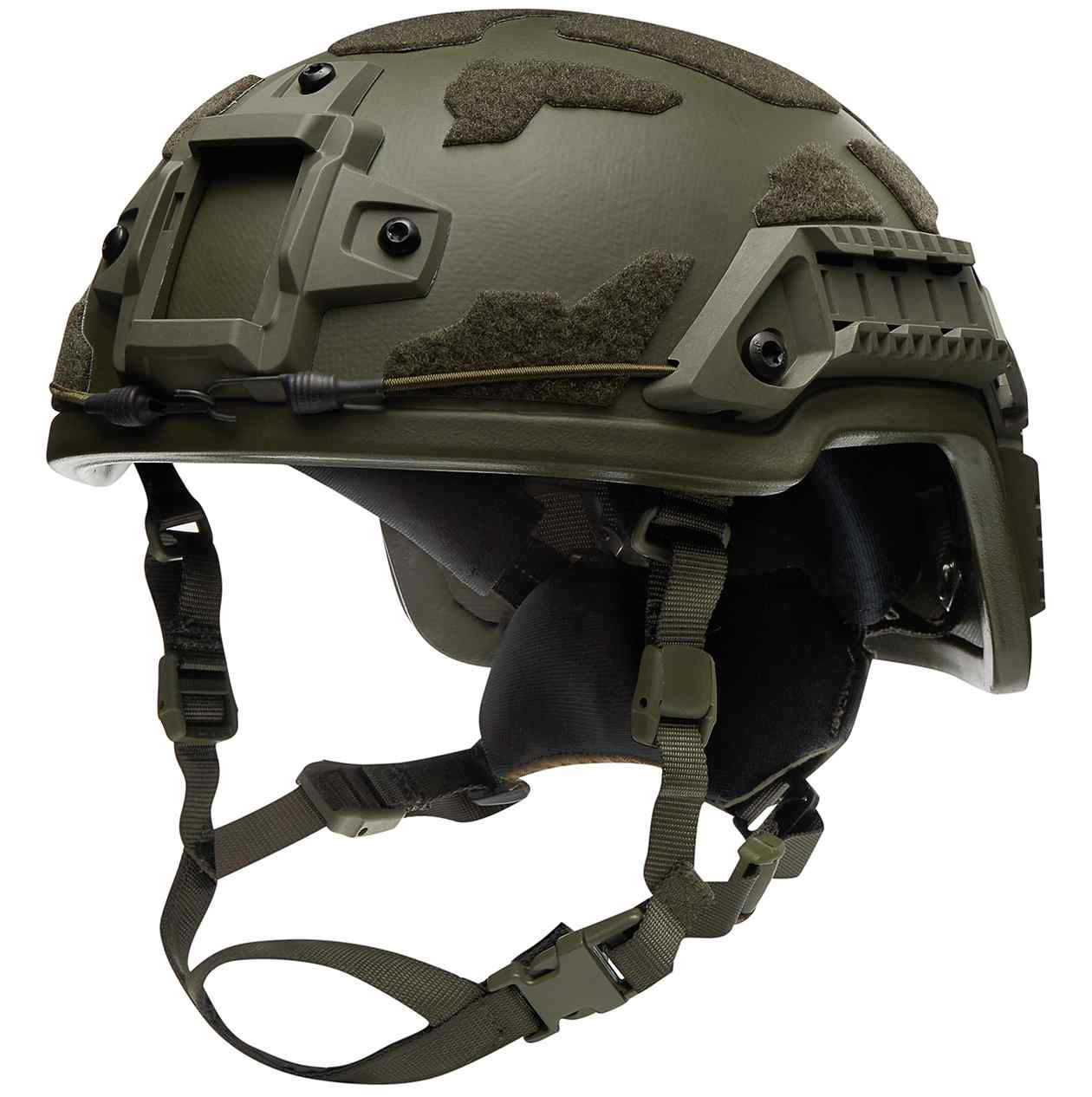Tactical helmets serve a crucial role in various high-risk professions, including military, law enforcement, and certain outdoor recreational activities. They are designed to protect the wearer from various forms of impact, ballistic threats, and environmental hazards. Modern tactical helmets have evolved significantly from their ancient predecessors, incorporating advanced materials and technologies to offer superior protection and comfort. This article offers an in-depth look at tactical helmets, their components, their significance, and tips for choosing the right one.

Evolution of Tactical Helmets
The evolution of head protection is a fascinating journey. The tactical helmet has come a long way from simple leather and metal helmets to today’s high-tech models.
Historical Background
In ancient times, soldiers used simple helmets made of leather or metals like bronze and iron. These early helmets offered basic protection against melee weapons but were quite heavy and uncomfortable. The need for better head protection became evident as combat evolved and weaponry became more sophisticated.
During the two World Wars, helmets made from steel became standard. These helmets provided improved protection against shrapnel and bullets. However, they were still heavy and offered limited comfort. Soldiers often found them cumbersome, especially during long marches and combat operations.
Modern Advancements
The late 20th century witnessed significant advancements in helmet technology. Materials like Kevlar and advanced polymers began to replace steel. These materials offered superior ballistic protection without the heavy weight. Helmets became lighter and more comfortable, making them more effective in various combat scenarios.
Modern tactical helmets incorporate features like modularity and customization. Users can add accessories like night vision devices, communication systems, and face shields. This versatility makes modern tactical helmets suitable for a wide range of applications, from military operations to law enforcement and search-and-rescue missions.
Advancements in materials and manufacturing processes have led to the development of helmets that offer improved protection, comfort, and versatility. Today’s tactical helmets are designed to meet the specific needs of different user groups, providing a high level of protection while ensuring comfort and functionality.
Components of Tactical Helmets
Understanding the components of a tactical helmet is essential for appreciating its functionality. Each part serves a specific purpose and contributes to the overall effectiveness of the helmet.
Shell Material
The shell is the outermost layer of the helmet. It is designed to provide ballistic protection and absorb impact. Modern tactical helmets commonly use materials like Kevlar, aramid fibers, and high-density polymers.
Kevlar is known for its high tensile strength and lightweight properties. It is resistant to bullets and shrapnel, making it a popular choice for ballistic protection. Aramid fibers offer similar benefits, providing excellent resistance to heat and impact.
High-density polymers add flexibility and durability. These materials are often used in combination with Kevlar and aramid fibers to create a composite shell. The combination of these materials results in a helmet that is both lightweight and highly protective.
Padding and Liner
Inside the shell, padding and liner systems are designed to provide comfort and impact absorption. Padding systems vary in complexity, from simple foam liners to advanced multi-layer systems.
Foam liners offer basic cushioning and impact absorption. They are lightweight and easy to replace. However, they may compress over time, reducing their effectiveness.
Advanced padding systems use multiple layers of foam, gel, and air cushions. These systems are designed to distribute impact forces evenly across the helmet. They offer superior comfort and durability, reducing the risk of head injuries.
The liner also plays a role in maintaining proper fit and stability. Adjustable padding allows users to customize the fit, ensuring that the helmet stays securely in place during movement.
Suspension System
The suspension system connects the liner to the shell and helps distribute the helmet’s weight evenly. It also allows for size adjustment, ensuring a snug fit. Suspension systems can include straps, harnesses, and impact-resistant components.
Straps and harnesses are typically adjustable, allowing users to customize the fit. Impact-resistant components, such as shock-absorbing inserts, provide additional protection by reducing the force of impact transmitted to the head.
The suspension system is critical for ensuring that the helmet stays securely in place. A well-designed suspension system enhances comfort and reduces the risk of injury by preventing the helmet from shifting or coming off during high-intensity activities.
Types of Tactical Helmets
Tactical helmets come in various types, each designed to meet specific needs and applications. Understanding the different types of tactical helmets helps users choose the right one for their specific requirements.
Ballistic Helmets
Ballistic helmets are designed to provide protection against projectiles and shrapnel. They are commonly used by military and law enforcement personnel. These helmets are made from advanced materials like Kevlar and high-density polyethylene (HDPE), offering a high level of ballistic protection while remaining lightweight.
Ballistic helmets often feature modular designs, allowing users to add accessories like night vision mounts, communication systems, and face shields. This versatility makes them suitable for a wide range of combat and tactical operations.
The level of ballistic protection varies, with different models offering protection against various threats. When choosing a ballistic helmet, it’s important to consider the specific threats you may encounter and select a helmet that meets the required protection level.
Bump Helmets
Bump helmets are designed to protect against impact rather than ballistic threats. They are commonly used in activities like mountaineering, search and rescue, and tactical training. Bump helmets are made from materials like polycarbonate and ABS plastic, providing lightweight protection against bumps, falls, and blunt force trauma.
Bump helmets often feature ventilation systems to keep the wearer cool during intense physical activities. They also have modular designs, allowing users to add accessories like headlamps, cameras, and communication devices.
While bump helmets do not provide ballistic protection, they are essential for activities where impact resistance is critical. Their lightweight construction and comfort make them suitable for extended wear.
Modular Helmets
Modular helmets offer the best of both worlds, providing protection against both ballistic and impact threats. These helmets feature interchangeable components that allow users to customize the helmet’s configuration based on their specific needs.
Modular helmets often include removable face shields, mandibles, and accessory mounts. This allows users to adapt the helmet for different missions and environments. For example, a modular helmet can be configured for urban combat with the addition of a face shield and communication system or adapted for mountaineering with the removal of unnecessary components.
The versatility of modular helmets makes them a popular choice for special operations forces and law enforcement units. They provide comprehensive protection while allowing users to tailor the helmet to their specific requirements.
Choosing the Right Tactical Helmet
Selecting the right tactical helmet involves several considerations, including fit, material, and additional features. The right choice ensures optimal protection, comfort, and functionality.
Fit and Comfort
Fit and comfort are paramount when choosing a tactical helmet. An ill-fitting helmet can be uncomfortable and may not provide adequate protection. It’s important to measure your head size accurately and choose a helmet that offers adjustable padding and suspension systems.
Try on the helmet and make the necessary adjustments to ensure a snug fit. The helmet should sit level on your head and cover the forehead without obstructing vision. The suspension system should distribute the weight evenly, reducing pressure points.
Consider the padding system and liner. Look for helmets with multi-layer padding that offers both comfort and impact absorption. Adjustable padding allows for a customized fit, ensuring the helmet stays securely in place during movement.
Material and Protection Level
The material of the helmet determines its level of protection and weight. Consider the specific threats you are likely to encounter and choose a helmet made from materials that offer the required protection level.
For ballistic protection, look for helmets made from Kevlar, aramid fibers, or high-density polyethylene (HDPE). These materials offer superior resistance against bullets and shrapnel.
For impact protection, consider helmets made from polycarbonate, ABS plastic, or other impact-resistant materials. These helmets provide protection against bumps, falls, and blunt force trauma.
Additional Features
Modern tactical helmets come with various additional features that enhance functionality and versatility. Consider your specific needs and look for helmets that offer the desired features.
Accessory mounts allow you to add devices like night vision goggles, headlamps, and cameras. Communication systems provide integrated options for seamless communication during operations. Ventilation systems help keep you cool during intense physical activities.
Consider the modularity of the helmet. Modular designs allow you to customize the configuration based on your specific needs. Removable components like face shields and mandibles provide flexibility for different missions and environments.
Caring for Tactical Helmets
Proper care and maintenance of tactical helmets are essential for ensuring their longevity and effectiveness. Follow these guidelines to keep your helmet in optimal condition.
Cleaning
Regular cleaning helps prevent the buildup of dirt, sweat, and debris. Use a mild soap and water solution to clean the shell and interior components. Avoid using harsh chemicals or solvents, as they can damage the materials.
Remove and clean the padding and liner according to the manufacturer’s instructions. Allow all components to air dry completely before reassembling the helmet. Avoid exposing the helmet to direct sunlight or high heat, as this can degrade the materials.
Inspection
Regularly inspect your helmet for signs of wear and damage. Check the shell for cracks, dents, or other deformities. Inspect the suspension system and straps for fraying or damage. Ensure that all components are securely attached and functioning properly.
Replace any damaged or worn components immediately. Even small defects can compromise the helmet’s protective capabilities. Follow the manufacturer’s recommendations for replacing the helmet after a significant impact or ballistic event.
Storage
Store your helmet in a cool, dry place away from direct sunlight and extreme temperatures. Avoid storing the helmet in a compressed or deformed state, as this can damage the materials and affect the fit.
Use a protective cover or storage bag to keep the helmet free from dust and debris. Avoid placing heavy objects on top of the helmet, as this can cause deformities.
Tips for Longevity
Handle the helmet with care, avoiding unnecessary impacts or rough handling. Avoid placing stickers or paint on the shell, as this can affect its integrity and protective capabilities.
Follow the manufacturer’s guidelines for care and maintenance, and perform regular inspections to identify and address any issues promptly. Proper care and maintenance ensure that your tactical helmet remains effective and reliable for years to come.
The Future of Tactical Helmets
Advancements in materials and technology continue to drive the evolution of tactical helmets. The future holds exciting possibilities for improved protection, comfort, and functionality.
Emerging Technologies
Emerging technologies like smart materials and integrated electronics are set to revolutionize tactical helmets. Smart materials can change properties in response to external stimuli, providing adaptive protection and enhancing comfort.
Integrated electronics offer features like heads-up displays (HUDs), real-time communication, and health monitoring. These technologies provide valuable information and enhance situational awareness during high-risk operations.
Advanced Materials
Research in advanced materials is focused on developing lighter, stronger, and more efficient helmets. Nanotechnology and advanced composites offer the potential for helmets that provide superior protection without the added weight.
New materials with enhanced ballistic and impact resistance are being developed. These materials offer the potential for helmets that provide comprehensive protection against a wide range of threats.
Customization and Personalization
The future of tactical helmets includes increased customization and personalization options. Advances in 3D printing and modular design allow for helmets that can be tailored to the specific needs and preferences of individual users.
Customization options include adjustable padding systems, modular components, and personalized fit. This ensures that each user can achieve optimal comfort and protection based on their unique requirements.
Conclusion: The Essential Role of Tactical Helmets
Tactical helmets play a vital role in protecting individuals in high-risk professions and activities. Understanding the evolution, components, types, and care of tactical helmets ensures that users can make informed choices and maintain their helmets effectively.
As technology and materials continue to advance, the future of tactical helmets holds exciting possibilities for enhanced protection, comfort, and functionality. By staying informed and choosing the right helmet, individuals can ensure their safety and effectiveness in high-risk environments.
Whether you are a military professional, law enforcement officer, or outdoor enthusiast, a well-chosen and properly maintained tactical helmet is an essential piece of gear. Embrace the advancements in helmet technology and equip yourself with the best protection available.
